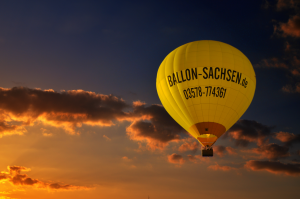- This topic is empty.
-
AuthorPosts
-
14/04/2025 at 14:29 #7519
When it comes to outdoor adventures, one of the most critical factors to consider is the weather. Rain can turn a delightful camping trip into a soggy nightmare if you’re not equipped with the right gear. Therefore, understanding which tent is most waterproof is essential for any outdoor enthusiast. In this comprehensive guide, we will delve into the various aspects of tent waterproofing, including materials, construction techniques, and key features to look for when selecting a tent that can withstand the elements.
Understanding Waterproof Ratings
Before we dive into specific tent models, it’s important to understand how waterproofing is measured. The waterproofness of a tent is typically quantified using a metric called the Hydrostatic Head (HH), which measures the amount of water pressure a fabric can withstand before leaking. For instance, a tent with a HH rating of 1,500 mm can resist the pressure of 1,500 mm of water before moisture starts to seep through.
– 1,000 mm to 1,500 mm: Suitable for light rain and occasional showers.
– 1,500 mm to 3,000 mm: Good for moderate rain and wet conditions.
– 3,000 mm and above: Ideal for heavy rain and extreme weather conditions.Materials Matter: The Best Fabrics for Waterproof Tents
The choice of fabric plays a crucial role in a tent’s waterproof capabilities. Here are some of the most common materials used in waterproof tents:
1. Polyester: This synthetic material is lightweight and resistant to UV rays, making it a popular choice for many tents. However, it typically has a lower HH rating compared to nylon.
2. Nylon: Known for its strength and durability, nylon tents often come with a higher HH rating. When treated with a waterproof coating, nylon can effectively repel water, making it an excellent choice for wet conditions.
3. Canvas: While heavier than synthetic options, canvas tents are breathable and can be treated to enhance their waterproof properties. They are particularly popular for glamping and long-term camping setups.
4. Silnylon: A blend of silicone and nylon, silnylon is incredibly lightweight and boasts impressive waterproof ratings. It is often used in ultralight tents designed for backpackers.
Construction Techniques: Seams and Coatings
Even the best materials can fail if not constructed properly. Here are some construction techniques that enhance a tent’s waterproof performance:
– Taped Seams: Many high-quality tents feature taped seams, where a waterproof tape is applied over the stitching to prevent water from seeping through. This is a crucial feature to look for in a waterproof tent.
– Rainfly Design: A well-designed rainfly extends over the tent body, providing an additional layer of protection against rain. Look for tents with a rainfly that covers the entire tent and has a good pitch to allow water runoff.
– Floor Material: The tent floor is often the most vulnerable area. A tent with a bathtub floor design, where the sides of the floor material rise up the walls, can help keep water out during heavy rain.
Key Features to Look For
When searching for the most waterproof tent, consider the following features:
1. Ventilation: While waterproofing is essential, proper ventilation is equally important to prevent condensation inside the tent. Look for tents with adjustable vents that allow airflow without compromising waterproofing.
2. Weight: If you’re backpacking, the weight of your tent matters. Lightweight materials like silnylon can provide excellent waterproofing without adding unnecessary bulk.
3. Setup Ease: A tent that is easy to set up can be a lifesaver in inclement weather. Look for designs that allow for quick assembly, especially if you anticipate rain during your trip.
Recommended Waterproof Tents
To help you make an informed decision, here are a few tents renowned for their waterproof capabilities:
– Big Agnes Copper Spur HV UL: This ultralight tent features a HH rating of 1,200 mm and is made from silicone-treated nylon, making it both waterproof and lightweight.
– MSR Hubba NX: With a HH rating of 3,000 mm, this tent is designed for three-season use and features a rainfly that provides excellent coverage.
– REI Co-op Half Dome SL: This tent offers a good balance of weight and waterproofing, with a HH rating of 1,500 mm and taped seams for added protection.
Conclusion
Choosing the most waterproof tent involves understanding the materials, construction techniques, and features that contribute to its performance in wet conditions. By considering the factors outlined in this guide, you can confidently select a tent that will keep you dry and comfortable during your outdoor adventures. Remember, investing in a high-quality waterproof tent is not just about comfort; it’s about ensuring safety and enjoyment in the great outdoors. Happy camping!
-
AuthorPosts
- You must be logged in to reply to this topic.



